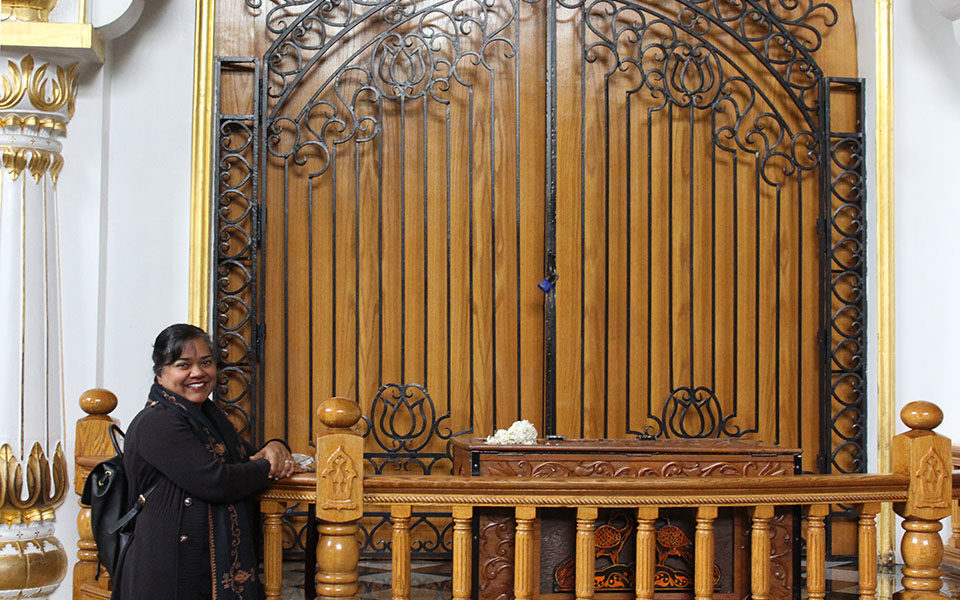In Hindu communities, whether men and women worship separately will vary by temple. At ISKON Toronto, there are three altars where members worship. Men are usually on the left, women on the right, and there’s a mix in the middle.
When I was young, I would be dancing and singing on the right side with all the girls. Now as a mom with two boys, I will sometimes be in the middle. I’m not going to go stand on the left side with the guys—my husband can—but I’ll be in the middle with my sons and with other men. That’s really my habit. I’ve always started on the right. I don’t think it has to do with comfort, because if I’m here by Krishna, I have no discomfort anywhere. If anything, when I come to the left altar, I don’t really stay long because I’m used to being on the right.

